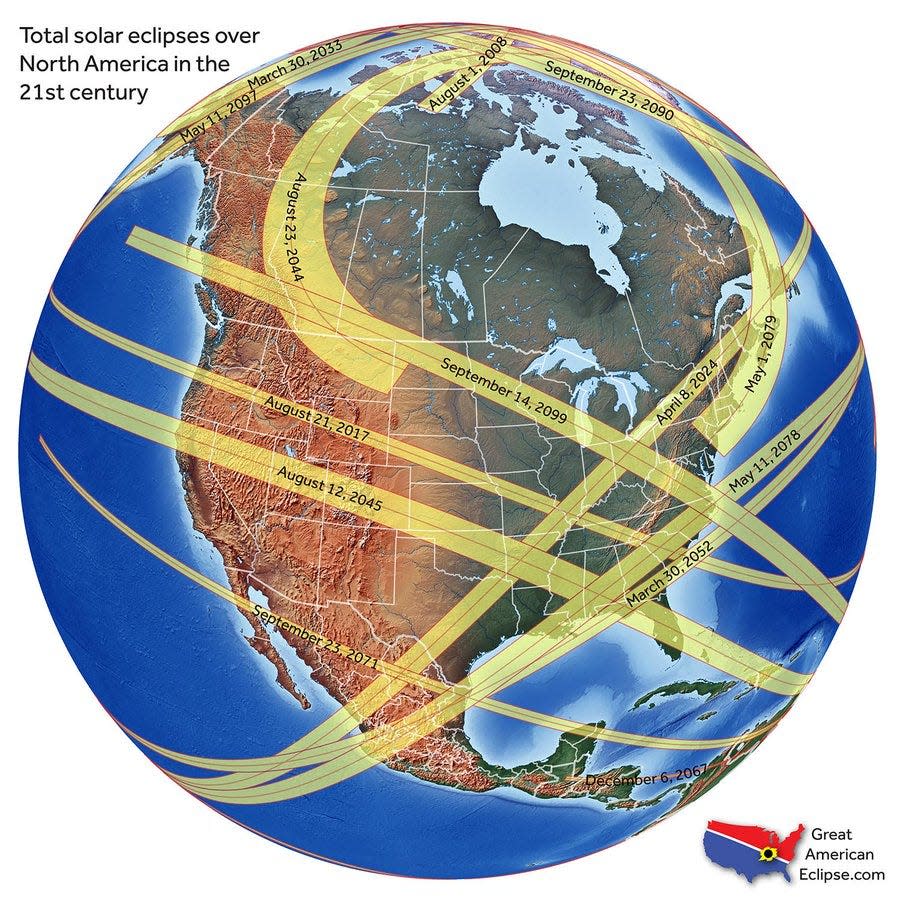Florida to be in the path of totality for these three future total solar eclipses
People will be rushing outside to check out a total solar eclipse — something that doesn't happen very often in the U.S. — on Monday, April 8.
For those in the path of totality, which stretches from Texas to Maine, the phenomenon will create what looks like a black Sun as the Moon moves completely between the Sun and the Earth causing the Moon to block the Sun's light from reaching Earth, casting a large shadow down on the planet.
Totality will not be visible in any part of Florida this year. However, the Sunshine State will see totality multiple times this century.
When are the next total solar eclipses in Florida?

According to data provided by National Eclipse, an independent informational platform, at least five total solar eclipses will be visible over the U.S. between now and the year 2100.
Here's when and where Florida can expect to see the next total solar eclipses, according to Time and Date, a hub for weather and astronomical data:
Aug. 12, 2045: Nearly all of Florida will see totality in 2045 as the path stretches across the Panhandle down to Miami. However, Jacksonville and the southern part of the state and southwestern coast — from Sarasota to Kendall will be out of the path of totality.
March 30, 2052: The path of totality will go directly over the Florida panhandle, with Pensacola, Panama City Beach and Tallahassee all scheduled to see the phenomenon.
May 11, 2078: Totality will only be seen in a small area in the northwest section of the Florida panhandle. While the viewing area will be small, parts of Florida are predicted to see up to four and a half minutes of totality.
How much of the April 8 solar eclipse will Florida see?
According to NASA's maps, those in Florida may be able to see about 65% to 80% of the sun covered, depending on where you are. An interactive zip code and map tool is available to take a closer look at your exact area's peak times and other possible spots for seeing the total eclipse.
This article originally appeared on Savannah Morning News: Future total solar eclipses in Florida: 3 opportunities in 21st century

